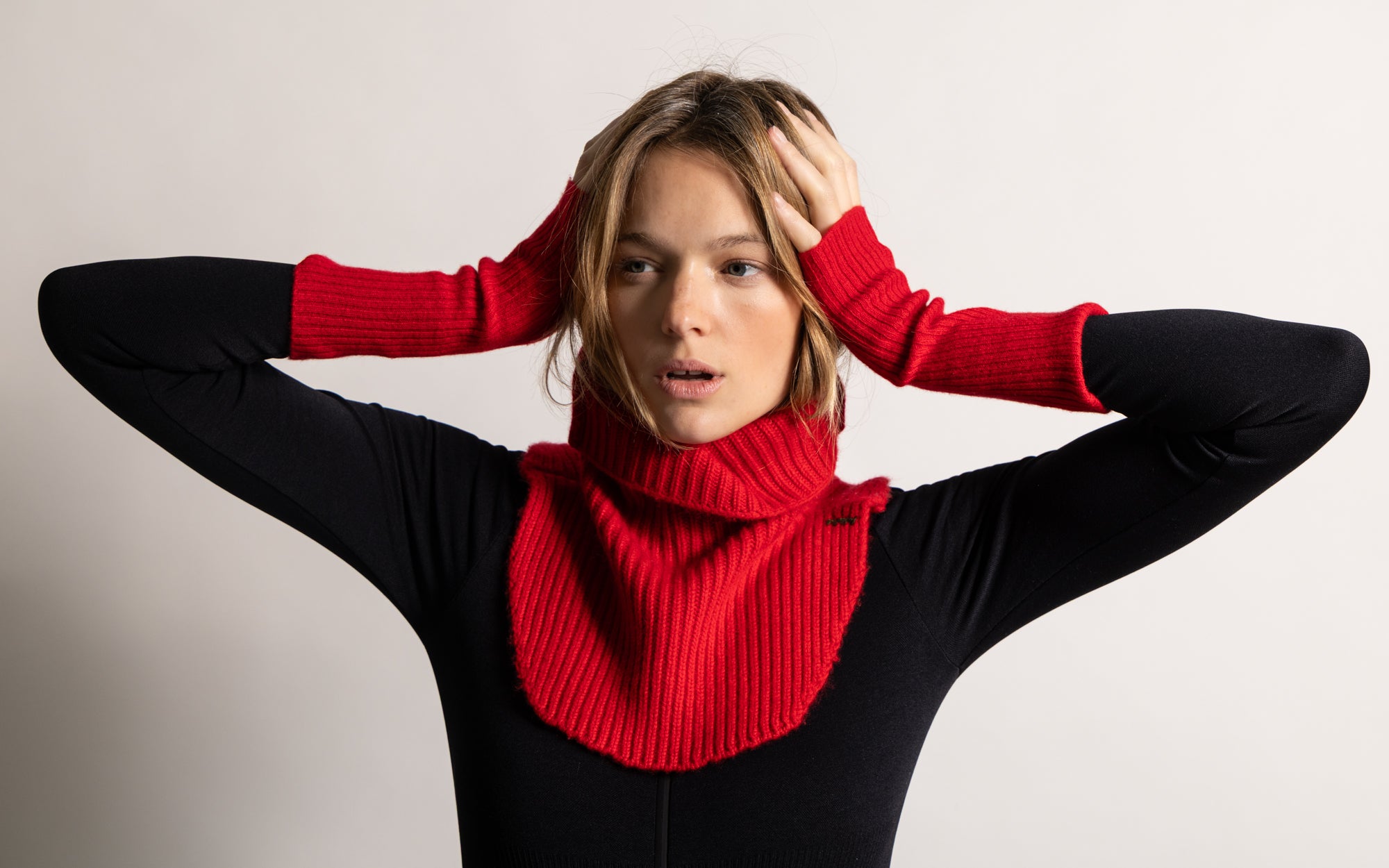
Cashmere and pashmina are luxurious fabrics known for their incredible softness, warmth, and timeless style. However, due to high demand, many counterfeits unfortunately exist.
Although the terms "cashmere" and "pashmina" are sometimes used interchangeably, there are some subtle distinctions. Genuine pashmina comes from the undercoat of the Changthangi goat, native to the Himalayas in Nepal and surrounding regions.
True cashmere comes from the undercoat of a different breed of goat, found particularly in China and Mongolia. Both materials offer exceptional warmth and softness, but pashmina is often considered even finer and lighter.
If you're looking for a pashmina or cashmere accessory, it's essential to avoid counterfeits. Here are some tips to become a savvy consumer and guarantee you're buying authentic quality:
The touch test: The ultimate test of softness
Touching the material is perhaps the most important way to distinguish genuine cashmere and pashmina from imitations. Imagine running your fingers over a cloud: that's the unparalleled softness you should experience with genuine cashmere or pashmina. The fabrics should be incredibly soft and smooth, like silk gliding over your skin. There should be no scratches or roughness, just a barely perceptible sense of luxury.
Pay attention to the way the fabric drapes. Genuine pashmina and cashmere are renowned for their superb drape, effortlessly following the curves of your body without clinging to it. Pinch off a small part of the fabric: it should compress easily and then return to its original shape without wrinkling. This incredible softness and luxurious drape are the hallmarks of these precious natural fibers, which stand out from all synthetic imitations.

The look test: Unveiling the secrets of weaving
Here are some elements to look for carefully to detect authenticity:
Tightness: Authentic cashmere and pashmina have a remarkably tight weave. If you hold the fabric up to the light, you shouldn't see many gaps or holes between the threads. This dense weave contributes to the fabric's exceptional warmth and durability.
Uniformity: Observe the evenness of the weave throughout the fabric. There should be no areas with loose threads or irregular patterns. This uniformity is a sign of meticulous craftsmanship and a high-quality product.
Imperfections: Examine the fabric carefully for loose threads, snags, or uneven stitching. While minor imperfections may be present in handmade pieces, authentic pashminas and cashmeres are generally very well made and have only minimal flaws. In contrast, counterfeits often have visible imperfections due to rushed production processes.
Transparency: Cashmere and pashmina are not completely opaque fabrics, but they shouldn't be entirely transparent. If you can easily see your hand through several layers of the fabric, this is a red flag and could indicate a thinner, less luxurious blend of fibers.
By taking the time to examine the weave carefully, you'll gain valuable information about the quality and authenticity of the accessories you plan to wear.

 Pashwrap
Pashwrap
The weight test: Lightness hiding heat
The weight test is an excellent way to assess a essential characteristic of genuine cashmere and pashmina: the impressive ratio of warmth to weight.
A feeling of lightness: Pick up the accessory and hold it in your hand. It should feel surprisingly light and airy for its size. The fibers in both of these materials are incredibly fine and delicate, resulting in very lightweight fabrics. Don't let their thinness fool you: these materials are incredibly effective at trapping heat.
Compare with your expectations: If you're used to the weight of classic winter sweaters, use that as a reference point. A cashmere or pashmina piece should feel significantly lighter, even if it offers similar warmth. This lightness testifies to the superior quality and luxurious nature of these natural fibers.
Beware of thickness: Fake products often attempt to mimic warmth by using thicker, heavier materials. If the creation feels surprisingly heavy for its size, especially compared to authentic cashmere or pashmina you may have worn before, this is a sign that it's a less luxurious substitute.
Remember that the weight test is most effective when combined with the feel and look tests. Experiencing the product's incredible softness, tight weave, and surprising lightness will give you a good idea of the product's authenticity and can easily spot a counterfeit.

The price test: when a deal is too good to be true
The allure of a luxurious cashmere or pashmina accessory at a bargain price can be tempting. However, in this case, the price test often serves as a valuable indicator of reality.
Superior material, higher price: Like cashmere, authentic pashmina, especially handmade pieces from Nepal, involves meticulous sourcing of the highest quality underlay fibers, craftsmanship, and traditional techniques. These factors contribute to its high cost.
Beware of extreme prices: If you find a "cashmere" or "pashmina" product priced significantly below the market average, it's a counterfeit. Genuine materials come at a cost, and reputable retailers don't significantly undercut the market value.
Do your research: Before you make your purchase, take the time to research the average price range for authentic cashmere or pashmina products. This will give you a basis for comparison that will help you identify potentially counterfeit items.
In short, each of these tests help you assess the quality, authenticity and durability of materials, helping you distinguish a genuine product from a counterfeit.
It's better to invest in an authentic piece that will stand the test of time and retain its beauty for many years, rather than succumbing to a cheap imitation that could quickly lose its appeal. Choosing quality is choosing timeless elegance.
